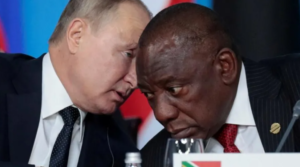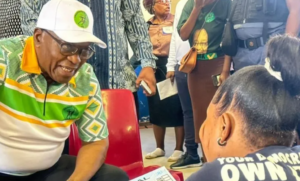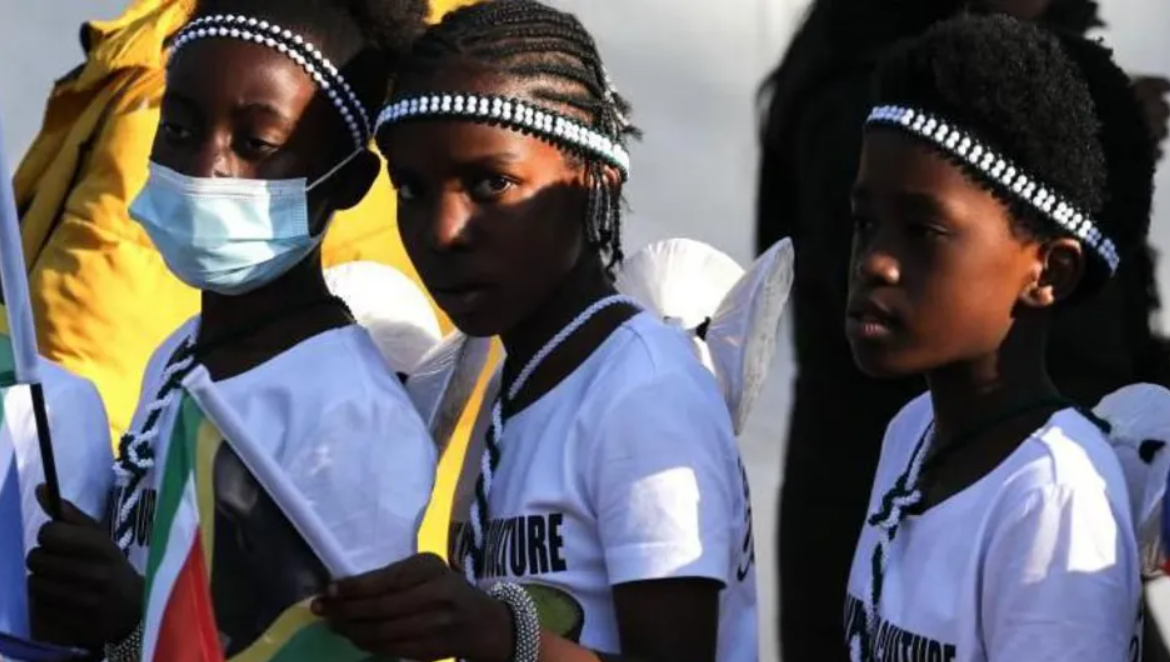The Precarious Power Balance in South Africa’s New Coalition Government
The unexpected unveiling of a revolutionary coalition administration by South African President Cyril Ramaphosa has changed the country’s political landscape and showcased his adeptness at navigating complicated political seas. Following the first loss of ANC parliamentary majority since apartheid’s end in 1994, this situation has transpired.
A Revolutionary Coalition Accord
On Sunday, Ramaphosa unveiled a cabinet consisting of 32 members following the May 29th election that did not yield a clear victor. Twenty positions, or over 60% of the cabinet positions, are held by the ANC, indicating a precarious power balance in this new administration. In his talks with the Democratic Alliance (DA), the major coalition partner, Ramaphosa, has been viewed by many as having negotiated this shift with remarkable skill.
The Democratic Alliance (DA), headed by John Steenhuisen, wanted 30% of the cabinet positions but only managed to get six, or less than 20%. Nevertheless, Ramaphosa deftly increased the DA’s influence by designating six-party insiders as deputy ministers. The ANC’s esteemed Enoch Godongwana is still at the head of the pivotal finance portfolio, which includes a deputy minister role.
Ideological Diversity and Representation
The racial and ideological diversity of the new cabinet is one of its most notable characteristics. A number of smaller parties, such as the Afrikaner nationalist Freedom Front Plus and the Pan Africanist Congress (PAC), have selected representation to Ramaphosa’s cabinet. A lot of people think this is the most ideologically diverse government that South Africa has had since apartheid because of this change.
Ministerial or deputy ministerial positions are distributed among members of the white, colored (mixed-race), and Indian communities, continuing the tradition of racial diversity in the cabinet. Voters in South Africa are placing a higher value on skill than on racial identification, and this inclusive approach reflects that.

The ANC was backed by the former Soviet Union when it was fighting minority rule
Important Meetings and What They Mean
The new South African cabinet’s inclusion of several prominent figures has caused some to wonder where the country’s policies would go from here:
John Steenhuisen’s nomination as Minister of Agriculture is perceived as a calculated attempt to appease white farmers’ concerns while striking a balance between land reform demands.
2. Ramaphosa appointed PAC leader Mzwanele Nyhontso to the post of Land Reform Minister, which was a stunning turn of events. Some see this ruling as a gesture toward more extreme land reformers and an attempt to balance the DA’s power.
3. International Relations: Ronald Lamola’s appointment as South Africa’s foreign minister, following his tenure as minister of justice shows the country’s unwavering support for the Palestinian cause and its position on global affairs.
Fourth, Economic Portfolios: The ANC’s will to preserve control over economic policy and black economic empowerment programs is demonstrated by its preservation of important economic ministries, such as Trade and Industry.
Difficulties and Possibilities
In its efforts to solve South Africa’s critical problems, the new coalition administration encounters numerous obstacles:
1. Economic Revival: The government needs to discover measures to boost the economy and generate jobs because unemployment is at record highs and growth has stalled.
2. Land Reform: The coalition will face a critical test in striking a balance between the demands for land redistribution and the necessity for agricultural production and food security.
Restoring public trust and encouraging investment requires addressing the top issue of rampant corruption, especially in state-owned firms.
4. Promoting Social Cohesion: The government’s ability to succeed in the long run depends on its ability to bring people together, regardless of their race or economic status.
Global Diplomacy and the BRICS Group
With a coalition in power, South Africa’s role in the BRICS (Brazil, Russia, India, China, and South Africa) alliance might be more closely examined. According to some commentators, there is potential for a more balanced foreign policy approach. In contrast, others say that South Africa’s prominence within BRICS may shrink owing to its domestic political developments.
Ronald Lamola’s nomination as South Africa’s foreign minister indicates that the country will continue to take a firm stand on important global issues, such as its support for the Palestinian cause and its desire to retain good relations with the BRICS states. However, the DA’s weight in the coalition could cause some foreign policy stances to shift, especially toward Western allies.

Conflict and Upcoming Difficulties
A new political terrain has emerged as a result of the coalition government’s creation. The main opposition groups today consist of Julius Malema’s Economic Freedom Fighters (EFF) and the MK party, which former president Jacob Zuma founded. The ANC-DA partnership may face formidable opposition from these groups because of their more extreme views on matters like land nationalization.
With Jacob Zuma facing corruption allegations, the government would have to deal with the possibility of unrest, especially in the KwaZulu-Natal region. It is believed that security problems in this unstable region will be addressed with the appointment of Senzo Mchunu as Minister of Police, succeeding Bheki Cele.
In summary
A new era in South African politics has begun with President Cyril Ramaphosa’s coalition government. The government’s goal is to tackle the country’s complicated problems while keeping the peace by bringing together people of different beliefs and political backgrounds. The capacity of coalition members to reach a consensus and bring about real changes in South Africans’ lives will determine the success of this historic political agreement.
All eyes will be on the coalition’s ability to strike a balance between opposing interests, execute critical reforms, and plot a path for a more united and wealthy South Africa as the nation begins its new political journey. Undoubtedly, this revolutionary political experiment will be tested in the months and years to come for its resilience and efficacy.


















